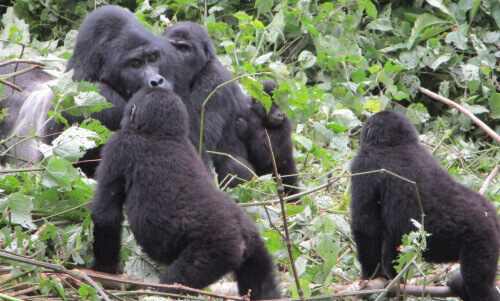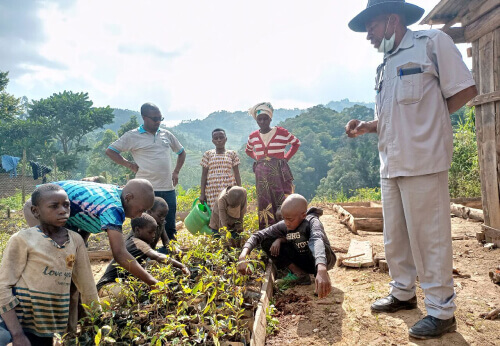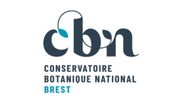Gardens and arboretum to save a mountain’s biodiversity
Re-creating green spaces for the inhabitants of Bwindi in order to maintain the habitat of the gorillas.
A forest for everyone
Protecting gorillas’ haven
Imagine a fascinating ancient rainforest, home to one of the last remaining populations of mountain gorillas... This is the Bwindi Impenetrable Forest National Park in south-western Uganda, covering more than 340 kms and home to incredible biodiversity. More than 1,000 plant species, some of which are endangered, have earned it a UNESCO World Heritage Site title. For some years now, the park has been protected to preserve this rich plant life and to allow the great apes and all the other species living there to flourish.

Gorillas can definitely live more serenely in their habitat, but someone has had to give way: the Batwa pygmy ethnic group, who also lived off the forest, has had to leave it. So how can they continue to live their daily lives without being tempted to exploit it again when the forest was at the heart of everything? A direct and simple answer can be to create new arboreal spaces, and it’s a good one. It is the very idea behind the project that we have joined, alongside the Conservatoire Botanique National de Brest, which accompanies a Ugandan community NGO: The Sunbeam Project.
Community gardens for local peoples
The Batwa pygmy ethnic group lived off the forest, using the available forest resources for food, habitat, handicrafts and medication, thanks to their ancestral knowledge of medicinal plants. So that their departure does not mean the sudden end of this whole model, nor yet going back to taking resources from the primary forest, the idea proposed by the local NGO is to support the creation of food and medicinal plant nurseries. It means such a relief for the forest, which is surrounded by the largest rural population in Uganda.
The first nurseries have been planted
 13,000 square metres of land, formerly planted with eucalyptus trees, have been cleared for the new crops and their future propagation. A whole arboretum is being developed, with more than 50 different species of indigenous trees, mainly fruit and medicinal, including four endangered species.
13,000 square metres of land, formerly planted with eucalyptus trees, have been cleared for the new crops and their future propagation. A whole arboretum is being developed, with more than 50 different species of indigenous trees, mainly fruit and medicinal, including four endangered species.
And it goes fast. 10,000 young plants have already been produced and made available to the inhabitants who take part in the nurseries. Another thing to keep in mind? Elephants! To ensure that these areas benefit the Batwa and not the pachyderms, large wire fences have been put in place. They protect the nurseries, the arboretum, and the community and educational gardens intended to take over and give the forest the relief it needs.
A whole new set of activities
From cultures to culture
While the main objective is to alleviate the primary forest by providing new local sources of supply to the people, the goals are multiple:
- To increase community knowledge and awareness of native plants, their traditional practical and cultural uses and their conservation;
- To document and propagate seedlings of all native trees in the National Park so local people can use them;
- To promote botanical training, education and research;
- To organize guided walks to develop ecotourism.
Thus, if the forest is the first most visible element that is maintained, it is also a whole cultural wealth that can continue to be perpetuated, so that new generations can in turn preserve it… while also preserving the habitat of the mountain gorillas.
The Sunbeam Project
This Ugandan community-based NGO works with the people of Kisoro, in the southern sector of the Bwindi Impenetrable Forest National Park. Since 2010, it has been supporting orphans in the community as well as less privileged families, notably through a school and various actions giving them the opportunity to consolidate their education and secure their future.

